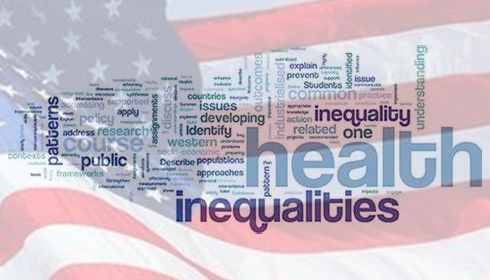
Unequal Lives: New Study Exposes Stark Regional and Racial Gaps in American Well-Being
A new study published in The Lancet reveals significant disparities in well-being across different regions of the United States. People in the South, Appalachia, and Rust Belt states show some of the lowest scores on the Human Development Index (HDI), a measure typically used to compare nations by examining factors like life expectancy, educational attainment, and income levels.
In contrast, individuals in states like Colorado, Maryland, New York, California, Virginia, and Washington, D.C., enjoy the highest levels of well-being, showcasing a stark divide across U.S. regions.
Led by Dr. Christopher Murray from the Institute for Health Metrics and Evaluation (IHME) at the University of Washington, the study highlights an urgent need for targeted social programs aimed at dismantling the structural inequalities affecting millions of Americans. According to Dr. Murray, the findings call for immediate action from policymakers, educators, and public health experts to address these pressing economic, social, and health challenges.
The study used an adapted version of the HDI to provide a more detailed understanding of well-being across different regions and populations in the United States. By analyzing data from 2008 to 2020, researchers observed a gradual increase in the national HDI, followed by a noticeable drop in 2020, which they attribute to the decrease in life expectancy linked to the COVID-19 pandemic.
Within the lowest HDI segment, several demographic groups are disproportionately represented, including Black men, American Indian/Alaska Native men and women, and Latino men. Despite white men making up the largest share within this low-well-being segment, they represent only a small proportion of those in the highest HDI category among Americans aged 25 to 44—a percentage that climbs significantly among individuals 85 years and older.
The study also highlights life expectancy disparities across different racial groups, with Asian American women experiencing the nation’s longest life expectancy at 88 years, while American Indian/Alaska Native and Black men have the shortest, at just 77 years. Across all racial groups, women tend to live longer than men, further underscoring gender differences within these findings.
Lead researcher Laura Dwyer-Lindgren emphasized that the disparities revealed in this study are not just statistical data but a call to action, spotlighting the potential long-term societal consequences of ignoring these deep-rooted inequalities. She noted that addressing these disparities and ensuring equitable access to resources and opportunities is essential for building a healthier, more inclusive future for all Americans. Published on November 7, this research underscores how effectively addressing these structural inequities could improve the overall well-being and quality of life for people across the United States.